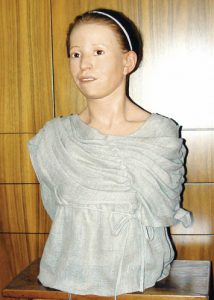
She may look like a girl of the 21st century, but she’s an eleven year old Athenian girl who lived and died in Athens during the 5th century BC.
The scientists are certain that she was one of the victims of the plague that struck Athens during the 5th century BC. They also know that the cause of her death was the typhoid fever that managed to kill ancient Athenian statesman Pericles and roughly one third of all people living in the city at that time. They also claim that it was this plague that contributed to Athens’ defeat by Sparta during the Peloponnesian Wars.
Myrtis’ skull was in an unusually good condition for remains that old, and this inspired Athens University Orthodontics professor Manolis J. Papagrigorakis to undertake – with the help of specialist scientists – a facial reconstruction.
Prof. Manolis J. Papagrigorakis thought that Myrtis’ ‘resurrection’ should not only be an opportunity for the world to see the face of a girl who played at the Acropolis while the Athenians were building the Parthenon, but also an urgent reminder and a strong message to the world and its leaders concerning the eradication of disease.
The reconstructed ‘Myrtis’ has called for world leaders to end the spread of disease as part of the UN Millennium Development Goals agreement.
See all the latest news from Greece and the world at Greekreporter.com. Contact our newsroom to report an update or send your story, photos and videos. Follow GR on Google News and subscribe here to our daily email!



